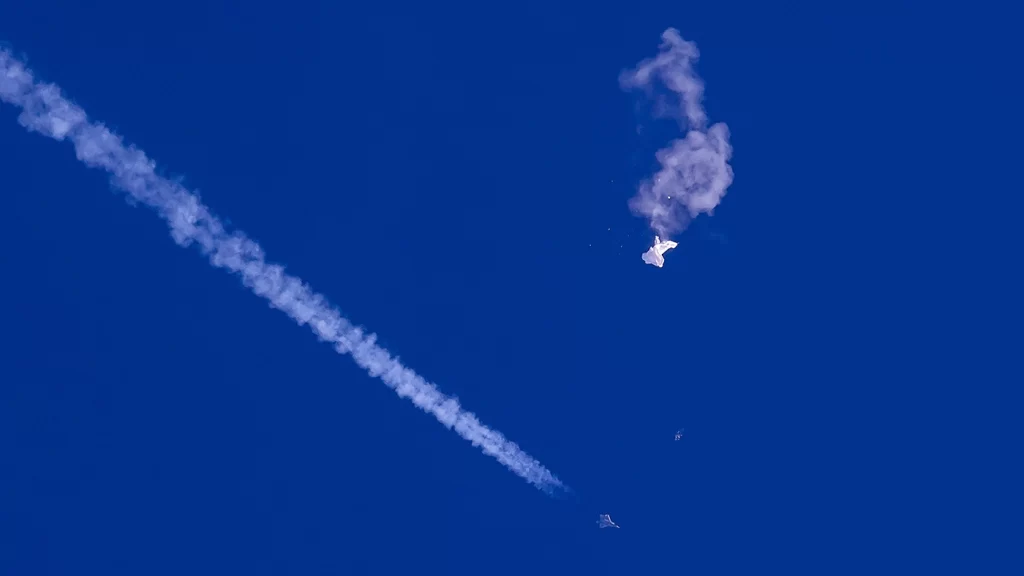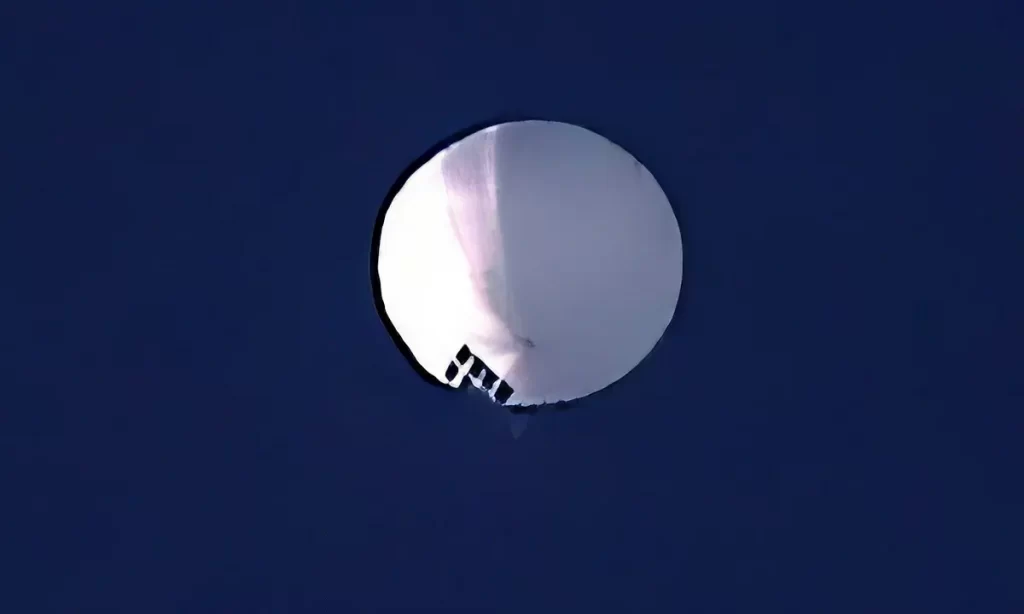Startled US officials were reportedly privy to the existence of not just one, but multiple Chinese surveillance balloons that had infiltrated their airspace, including one that boldly glided over a formidable US carrier strike group patrolling the vast Pacific Ocean. According to leaked intelligence documents that were allegedly obtained by the intrepid Massachusetts air national guard member, Jack Teixeira, and subsequently reported by The Washington Post, these clandestine Chinese balloons, code-named “Killeen-23,” “Bulger-21,” and “Accardo-21,” was equipped with cutting-edge surveillance technology that left American analysts in awe.

The leaked documents, said to have originated from the elusive National Geospatial-Intelligence Agency (NGA), contained annotated photos of the balloons that were enough to make any espionage aficionado swoon. These aerial intruders were not your ordinary party balloons. Killeen-23 was touted to possess an all-seeing eye, with the ability to operate “any” surveillance technology known to humankind, including radar that could peer through the darkness of night or the shroud of clouds and flimsy materials. Bulger-21 and Accardo-21 were not far behind in terms of their espionage prowess, boasting advanced surveillance equipment of their own. Bulger-21 was even rumored to have embarked on a globetrotting adventure from December 2021 to May 2022, leaving a trail of mystery and suspicion in its wake.
The implications of these revelations are nothing short of staggering. The Chinese balloons’ capability to gather critical intelligence and clandestinely monitor the movements of the formidable US military could pose a grave threat to national security. The very thought of these balloons skulking about, evading detection with their state-of-the-art surveillance technology, sends shivers down the spine of US defense officials. The leak of this information by Teixeira, the alleged whistleblower, has exposed the stark realities of covert foreign surveillance activities and the vulnerabilities of US intelligence and security systems.
As expected, the Biden administration has come under heavy fire, particularly from Republican critics who lambasted the government for not taking swift action to shoot down the Chinese surveillance balloon back in February. With the revelation of multiple balloons in the leaked documents, questions abound about the adequacy of the administration’s response and the overall effectiveness of US counterintelligence measures. The Pentagon and the office of the Director of National Intelligence, tight-lipped as ever, have refrained from commenting on the leaked information, leaving the public and officials alike in a state of heightened apprehension.

This incident serves as a stark reminder of the pressing need for bolstered security measures to detect and neutralize foreign surveillance activities. It underscores the gravity of safeguarding classified information and preventing unauthorized disclosures to safeguard US national security interests. As the game of espionage continues to unfold in the shadows, it is clear that vigilance, innovation, and stringent safeguards are imperative to defend against the ever-evolving threats posed by foreign powers and their insidious surveillance operations.
In conclusion, the leaked intelligence documents allegedly obtained by Teixeira have shed light on the enigmatic world of Chinese surveillance activities, unraveling the intricacies of their sophisticated espionage operations. The revelation of multiple balloons infiltrating US airspace underscores the urgent need for enhanced counterintelligence measures to protect against foreign surveillance activities. It also serves as a stark reminder of the importance of safeguarding classified information to prevent unauthorized disclosures and safeguard US national security interests in an ever-competitive and covert geopolitical landscape.


